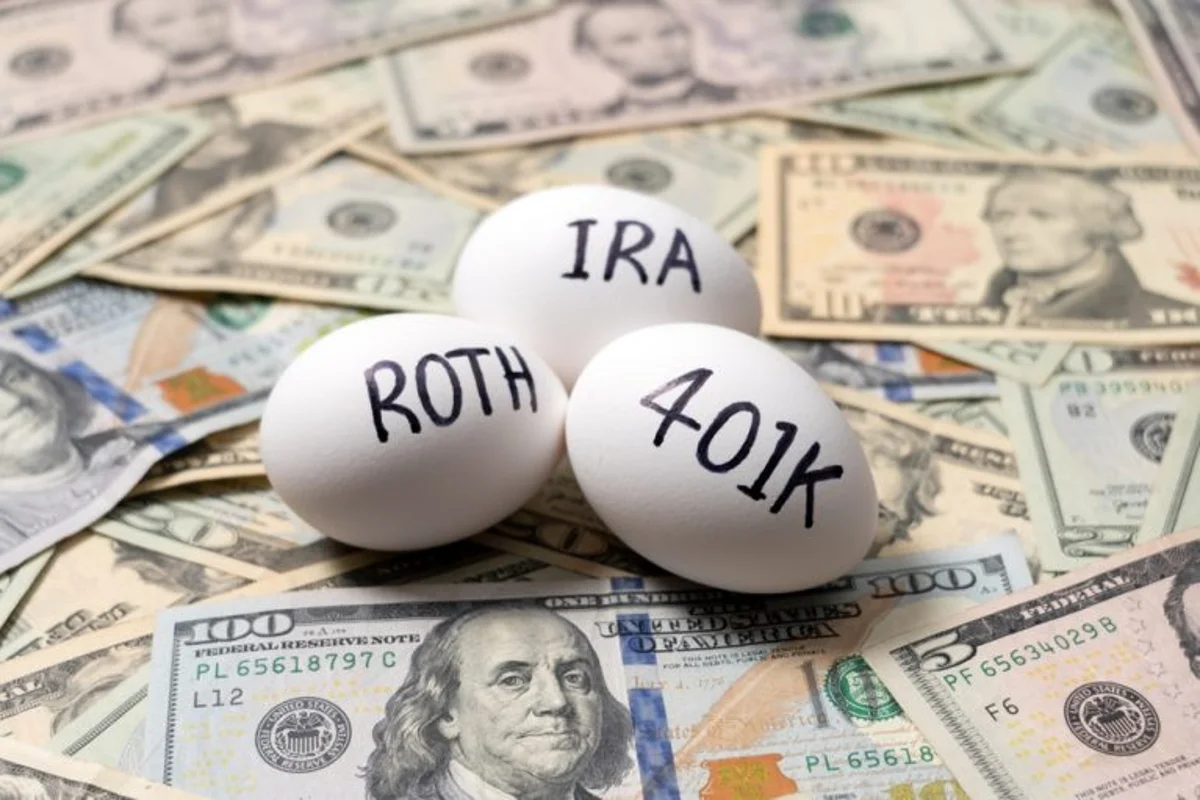By Margaret Jackson
Copyright benzinga

Choosing between a Roth and a traditional IRA for your retirement boils down to one simple question: Do you want to pay taxes now or later?
A traditional IRA offers an immediate tax break on your contributions, which can lower your taxable income today. In exchange, you pay taxes on your withdrawals in retirement. It’s often the right move for high-income earners who expect to be in a lower tax bracket when they retire.
A Roth IRA flips that. You contribute after-tax dollars, meaning no immediate tax deduction. All your money, including contributions and growth, can be withdrawn tax-free in retirement. This is the preferred choice if you’re in a lower tax bracket now and anticipate a higher one later in life.
This guide will give you a breakdown of each type of IRA to help you decide which retirement account will put the most money in your pocket in the long run.
With a Roth IRA, you pay taxes now and never again. You contribute after-tax money, meaning you don’t get an immediate tax break. This upfront sacrifice is a down payment on a long-term benefit: All of your investments grow tax-free, and you can withdraw that money tax-free in retirement, provided you meet certain conditions.
Taxation: Contributions are not tax-deductible. Your money grows tax-deferred, and qualified withdrawals of both contributions and earnings in retirement are tax-free.Contribution limits: For the 2025 tax year, the maximum you can contribute annually to a Roth is $7,000 if you’re younger than 50 and $8,000 if you’re 50 or older.Income limits: Eligibility to contribute is based on your income. If you’re a single filer in 2025, your modified adjusted gross income (MAGI) must be less than $150,000 to make a full Roth IRA contribution. For joint filers, your MAGI must be less than $236,000 to make the full contribution.
Required minimum distributions (RMDs): Withdrawals from Roth IRAs are not required until after the death of the account owner, but beneficiaries of Roth IRAs are subject to RMD rules.
The Roth IRA is a powerful tool if you have a long time horizon and expect your income and tax bracket to increase over your career. If you’re a young professional earning a modest salary today but anticipating raises, you’re the classic Roth IRA candidate. You can pay taxes on your contributions now at a low rate, and by the time you’re in a higher tax bracket in your peak earning years, your Roth IRA will be a valuable source of tax-free income.
Roth IRAs are also great for estate planning because there are no required distribution minimums during the original owner’s lifetime. That means the money can continue to grow tax-free and be passed on to heirs.
Traditional IRA
A traditional IRA gives you a tax break now, but you’ll have to pay taxes when you withdraw from the account. You may be able to deduct your contributions from your current taxable income, which reduces your tax bill in the year you contribute. But when you withdraw the money in retirement, both the deductible contributions and the investment gains are taxed as ordinary income.
Taxation: Contributions may be tax-deductible, offering an immediate tax benefit. Your investments grow tax-deferred, and all withdrawals in retirement are taxed.Contribution limits: For the 2025 tax year, the maximum you can contribute annually is $7,000 if you’re younger than 50 and $8,000 if you’re 50 or older.Income limits: There are no income limits to contribute to a traditional IRA. The ability to deduct your contributions from your taxes is based on your income and whether you or your spouse is covered by a workplace retirement plan.
Required minimum distributions: Generally, you must start taking withdrawals from a Traditional IRA when you reach age 73, although participants in a workplace retirement plan can delay taking their RMDs until they retire unless they’re a 5% owner of the business sponsoring the plan.
The traditional IRA is often a better choice if you’re a high-income earner in a high tax bracket today, and you expect to be in a lower one during retirement. The immediate tax deduction can be a significant benefit, effectively lowering your current tax bill.
It can also be a strategic choice if you’re maximizing your contributions to a workplace retirement plan and want an additional tax-advantaged account. While there are income phaseouts for the deduction, anyone with earned income can contribute.
Roth IRA vs. Traditional IRA
Implementation
You can open a Roth or traditional IRA at almost any major brokerage or financial institution. Many offer low-cost or commission-free investing in a wide range of securities, including stocks, bonds and exchange-traded funds (ETFs).
Brokers: Charles Schwab, Fidelity, Vanguard and T. Rowe Price are all excellent options with powerful research tools and low-cost investment products.ETFs: Consider a low-cost, broadly diversified S&P 500 ETF or a total stock market ETF to serve as the foundation for your IRA.Tools: Online calculators and planning tools on the Fidelity and Vanguard websites can help you estimate your future tax bracket and determine which account is a better fit.
An effective strategy is to hold both a Roth and a traditional IRA, a practice sometimes referred to as “tax diversification.” By having both types of accounts, you have flexibility in retirement. If you need a large sum of money for a one-time expense, you can withdraw from your tax-free Roth IRA. If you want to keep your income low in a particular year to manage your tax bracket, you can draw from your traditional IRA.
Frequently Asked Questions



